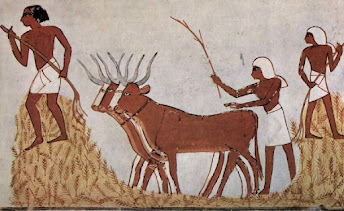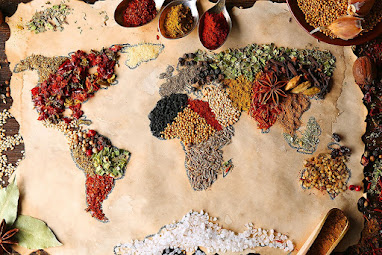Cows, uses and issues
Domestication of animals is one of the features of human civilization, when our ancestors started to settle, and abandoned nomadism. They learn how to breed animals and plants, to have secure sources of food, this practices replaced in many centuries the practice of hunt and gathering.
in the next millennia they were introduced in Europa, Africa and east Asia, becoming an important source of meat, dairy and leather. They also were used as currency, to exchanges goods, pay taxes and ad a fixed price in the first civilization, before metal currency became popular.
My reason to choose this animal is because in my native country, Argentina, cows are important in our economy and our beef has a high reputation. In most parts of my country, cows are grass-fed, and that contributes to its quality.
Sustainable or Unsustainable?
Any human activity over nature will cause impact, that is inevitable, the question is how to make this less negative and sustainable over time? As it is well-known, cattle has a long reputation in being very contaminant, especially related with the methane emissions. Cows are ruminants, like goats or sheep, but, what is a ruminant? "Ruminants have four stomachs and digest their food in their stomachs instead of in their intestines, as humans do. Ruminants eat food, regurgitate it as cud and eat it again. The stomachs are filled with bacteria that aid in digestion, but also produce methane (Silverman, J. 2021, March, 20)". This methane accumulates in the atmosphere and is one of the causes of worldwide greenhouse effect that leads to climate change; only agriculture causes the 40% of this gas. This is one of the main features of cattle as a unsustainable source of food; other problems related with this is deforestation. In order to produce meat it is necessary large portions of land that are deforested, destroying biome, indigenous flora and fauna, creating an imbalance in the ecosystem. It also can contamination in air and water, and may cause illness in close populations.
Nevertheless, there are ways to make cattle sustainable in long term projections. This turn meat and dairy into a more expensive product, but the positive results and benefits for the environment are definitely worth it . What 's more, it is important that governments and the economy are aware of this issues and develop policies and laws to lead the industry to a change, if not, the damage will continue. One of the strategies to make cattle production more sustainable is to change the diet of the animals, so methane emissions reduces considerably (like seaweed for cattle). Changes in the pasture areas, adding trees and other types of pastures, "such as that in a silvopastoral landscape promotes healthy soil with better water retention (and less runoff), encourages predators of harmful animals, minimizes greenhouse gas emissions, improves job satisfaction for farm workers, reduces injury and stress in animals, improves welfare and encourages biodiversity using native shrubs and trees (Broom, D. 2013, September 25)." This alternatives already has been implemented in countries like Colombia, when even the milk production increased with this strategy.
However, the issue is that is not enough if some countries take this measures, and the rest keep the same practices that cause harm. The effort must be joint to achieve the objective of making meat production a sustainable practice.
Beef Shank Steak
This cut is found in the leg if the cow, just above the knee. "This cut of meat is cut in horizontal cuts (often in 1-inch slices),
which is why beef shank looks like a steak with a circle of the leg bone
in each piece. (It is also sometimes sold boneless.) Inside the bone
there is piece of
This cut is not tender at all, since it belongs to the leg of the animal, a hardworking muscle, so it is full of connective tissue, bones and joints. It is not adequate for a steak, but it can become really tender through if it is cooked for a long time in moist heat.
Most of recipes that include this cut, are soups or stews, since they are long cooking methods. A plus of this cut is that is cheap and nutritious, and properly cooked is delicious.
Argentian "Puchero" (stew)
I choose this recipe because it is popular in my country and one of my mother's favorite recipe, I had nice memories of this dish, sharing it in the table with my family during winter.
Ingredients
Serves: 6 portions Yield: 1 pot stew Time: approximately 3 hours
 |
| Puchero, by Rachel Tolosa Paz |
200 gr yellow potatoes
150 gr sweet potatoes
200 gr Butternut squash
100 gr onions
2 garlic cloves, crushed
2 corns cut in three parts
200 gr carrots
1 bay leaf
100 gr bacon (optional)
Salt, black pepper to taste
Olive oil or vegetable oil
Method
1) Peel potatoes, sweet potatoes and Carrots. Cut all vegetables in even portions (big chunks) and reserve. Cover potatoes with cold water to prevent oxidation.
2) In a large pot pour some olive oil and heat, sauté the onions, garlic and carrots till slightly golden, remove and reserve.
3) Season the shanks with salt and black pepper. In the same pot pour some olive oil and heat, carefully put the shanks and braised till brown. Pour boiled water over the shanks, covering them completely and simmer for 1, 5 hours. With a spoon remove the impurities.
4) Add the sauteed vegetables, and after 15 minutes, add the corn, yellow potatoes and sweet potatoes, and butternut squash. Cook for 20 more minutes or till tender.
Notes:
- If bacon is added to the recipe, sauté it first, then add the vegetables.
- In case you use a pressure pot to cook the shanks, the time is 18 min after the valve activates. Then open and simmer the vegetables, cook with the lid open. Using this kind of pot will reduce time
- When it is served, in Argentinian tradition, first is served the broth, when this is finished, it is served the meat with the vegetables and usually is seasoned with salt, pepper, oil and some white vinegar. The bone marrow is spread on toasted bread and sprinkle some salt, simply delicious!
Some Reflections
In my daily life I am not used to eat beef, sometimes I do it, around twice a month, some months none at all. My diet is more vegetable based, and I eat legumes, eggs, vegetables and fruits most of time. If I have to choose a meat to eat, I would rather have chicken or fish, not beef, but I almost never eat them though.
Currently, the world should change feeding habits, because the current trend in producing meat is clearly far to be totally sustainable, despite the efforts of many countries. Other reality is that some can afford this changes, but most countries can't or the local policies are not worried at all about this issues. A major problem is that the planet natural sources are not infinite, and it is important to protect and keep them to the next generations. If humankind does not make an effort to pull in the same direction there will be more problems that the current ones, and starvation and ecological problems will be more common each year, something that is happening right now. All this concerns impacted on my decision to reduce meat consume, and in the future if I own a food business I would focus in vegan cuisine, and sustainable options.
Sources
Broom, D. (2013, September 25). Sustainable livestock production is possible. University of Cambridge. https://www.cam.ac.uk/research/news/sustainable-livestock-production-is-possible
Matsumoto, N. (2019, August 13). Is Grass-Fed Beef Really Better For The Planet? Here’s The Science. Https://Www.Npr.Org/. https://choice.npr.org/index.html?origin=https://www.npr.org/sections/thesalt/2019/08/13/746576239/is-grass-fed-beef-really-better-for-the-planet-heres-the-science
Okshevsky, M. (2020, March 15). Cows, Methane, and Climate Change. Let’s Talk Science. https://letstalkscience.ca/educational-resources/stem-in-context/cows-methane-and-climate-change
Silverman, J. (2021, March 20). Do cows pollute as much as cars? Https://Animals.Howstuffworks.Com. https://animals.howstuffworks.com/mammals/methane-cow.htm
Tolosa Paz, R. (n.d.). Puchero [Photograph]. Https://Recetasdecocina.Elmundo.Es/. https://www.sbs.com.au/food/recipes/puchero
Winger, J. (2020, October 26). How to Cook Beef Shank . The Prairie Homestead. https://www.theprairiehomestead.com/2018/10/how-to-cook-beef-shank.html
Zeder, M. A. (2008, August 19). Domestication and early agriculture in the Mediterranean Basin: Origins, diffusion, and impact. PNAS. https://www.pnas.org/content/105/33/11597.figures-only?sid=b5e8d5c7-3919-4919-9a72-37d56194e9b8


Comments
Post a Comment